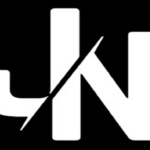There are definitely other categories of shots used in filmmaking besides shot size and angle. Here are some additional ones:
By Function:
A-Roll: The primary footage of the film, typically featuring the main actors and dialogue.
B-Roll: Supplemental footage that supports the A-roll, often showing establishing shots, scenery, or cutaway shots.
Insert Shot: A close-up shot of an object or detail used to add emphasis or provide additional information.
Reaction Shot: A shot that shows a character’s reaction to something that just happened.
Cutaway Shot: A brief shot that interrupts the main scene to show something else, then cuts back to the main scene.
By Camera Movement:
Tilt Shot: The camera pivots vertically along its axis, following a moving subject or revealing a new scene.
Pan Shot: The camera pivots horizontally along its axis, following a moving subject or revealing a new scene.
Tracking Shot: The camera moves along a dolly track, following the action or revealing the environment.
Handheld Shot: The camera is held by the cameraperson, creating a shaky and dynamic feel.
Drone Shot: The camera is mounted on a drone, allowing for aerial shots and expansive views.
Other Special Techniques:
Dutch Angle: As mentioned before, the camera is tilted to create a sense of unease or instability.
Jump Cut: An abrupt cut between two shots, creating a jarring or disorienting effect.
Slow Motion: Slowing down the footage to emphasize movement or create a dreamlike effect.
Fast Motion: Speeding up the footage to condense time or create a sense of urgency.
This is still not an exhaustive list, and filmmakers will often experiment with different shot types and techniques to achieve their desired visual style and storytelling effect.

